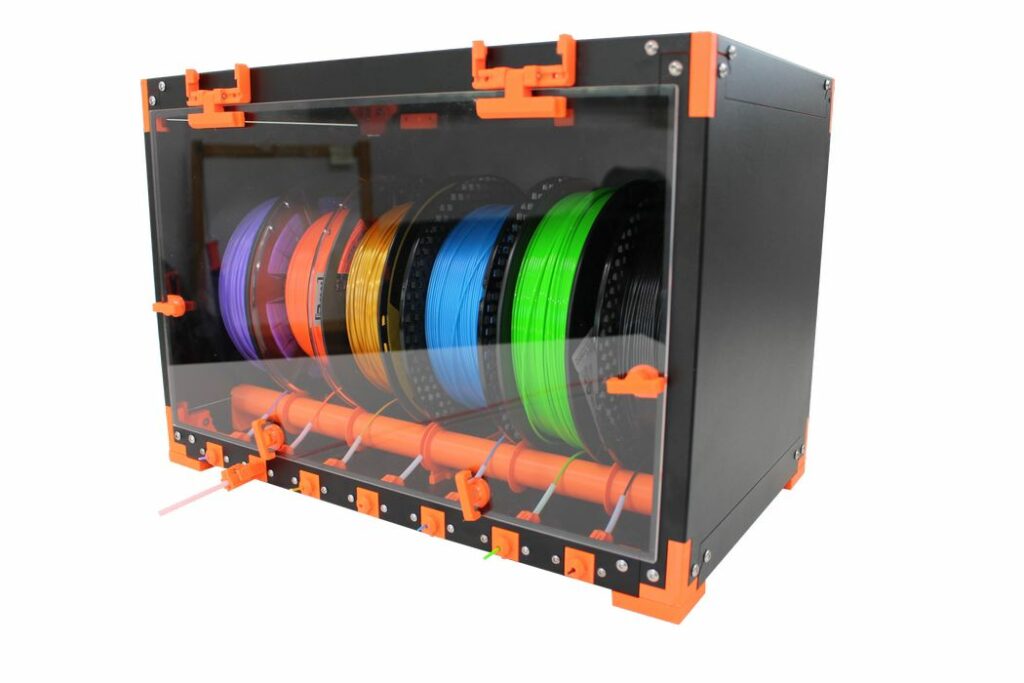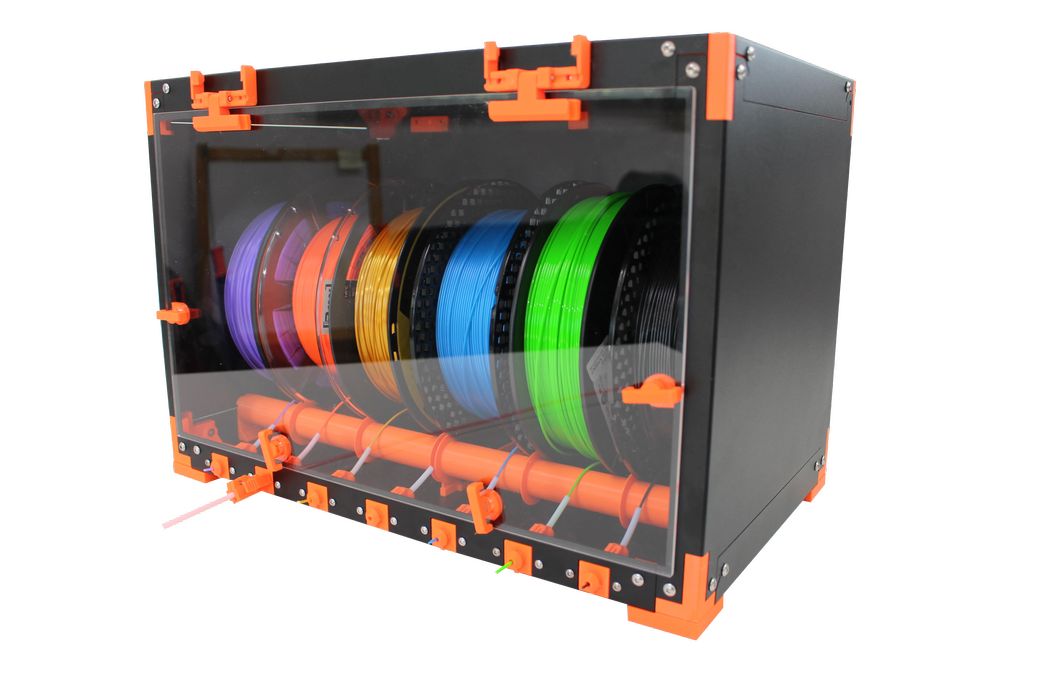
Printerbox 3D announced a new 3D print accessory that’s quite interesting.
The French startup had previously launched their initial product, the Prusa-box. This is a purpose-built enclosure for the popular open gantry Prusa Research equipment that otherwise operates in ambient room air. By enclosing the printer, print quality and reliability can increase.
Now they’ve announced the “Spool tank”, a system for storing and using spools of 3D printer filament.
This follows the “dry box” trend we’ve seen lately, but with some important differences.
“Dry” filament is the rage these days, because many types of 3D printer materials are hygroscopic to differing levels. This means they can absorb humidity from the air, and that’s not good. The water stays in the filament until heated in the 3D printer hot end, where it forms bubbles that corrupt print quality, strength and appearance. By keeping filament dry these issues can be avoided.
Drying systems can be straightforward. Many 3D printer operators simply keep their spools in a sealed box with a bunch of desiccant bags. Others will repurpose cheap food dryers to hold spools for drying by low temperature heat. Sometimes there are specially designed “dry boxes” that also provide this function.
Those can dry the filament, but there are other things to consider, and that’s where Printerbox 3D has been doing some thinking.
Like other dry boxes, the Spool tank will keep your spools free from dust and humidity, but there are quite a number of other considerations.
The main problem with most dry boxes is that they are intended to STORE the spools, rather than allow USE of the spools. For example, to 3D print a spool that’s currently inside one of those repurposed food dryers, you must find a small hole to route the filament out to the 3D printer. It can be done, but it’s really awkward and poses additional force on the filament.
The Spool tank is specifically designed to not only store the filament, but also use the filament to print while it’s in the box.
To do so, they’ve included very smooth paths for the filament to travel from the box to the printer, including use of PTFE tubes. The spools are also mounted vertically on rollers, which avoids the horizontal problem of filament tangles.
The system also includes an optional humidity control kit, that is comprised of a digital thermometer, hygrometer, and dehumidifying hydrosorbent.
Here’s a list of other useful properties of the Spool tank:
- Small, yet can fit six 1kg spools at once
- Sized to fit on a standard shelf
- Can be wall mounted
- Can be stacked for 12, 18 or more simultaneously available materials
- Moisture proof
- Clear window for easy visual assessment of current material reserves
- Fits perfectly on the company’s Prusabox
- Ideal for use with the Prusa MMU2S multimaterial accessory
The Spool tank is sold as a kit, and you’ll have to 3D print multiple pieces as well. Pricing starts at €209 (US$214), and could be one of the best investments for those frequently using multiple spools.
Via Printerbox 3D

